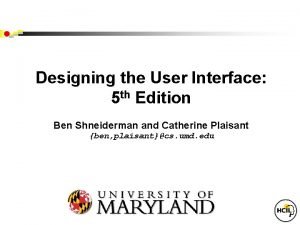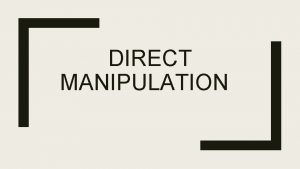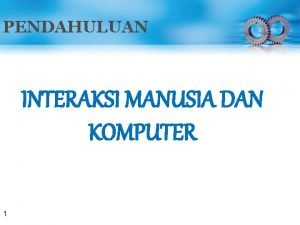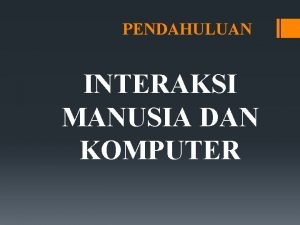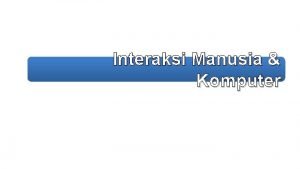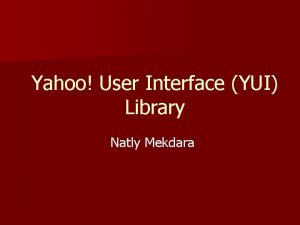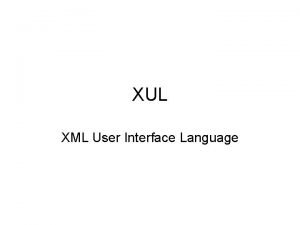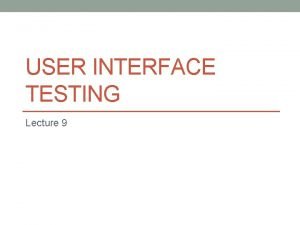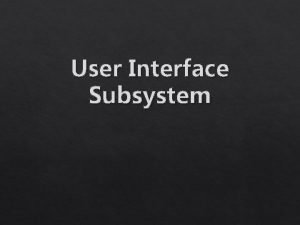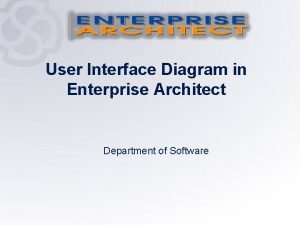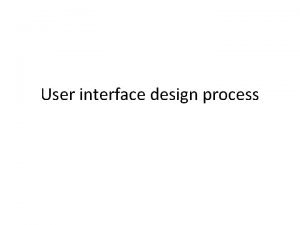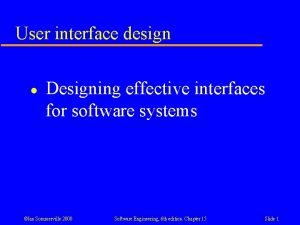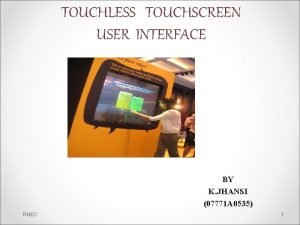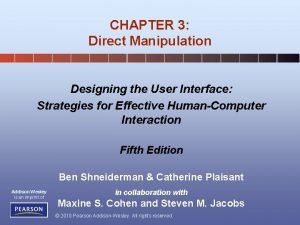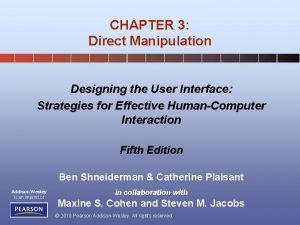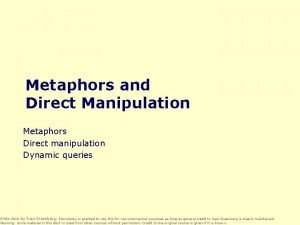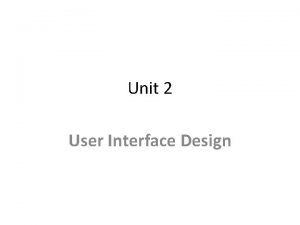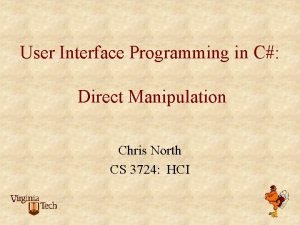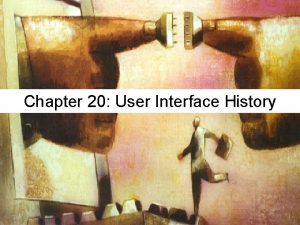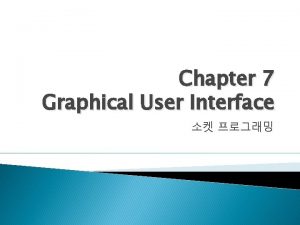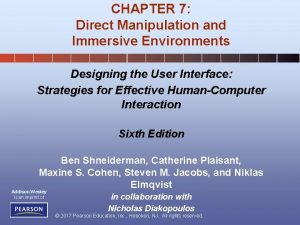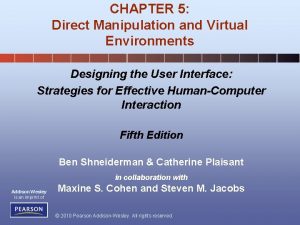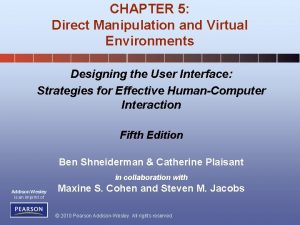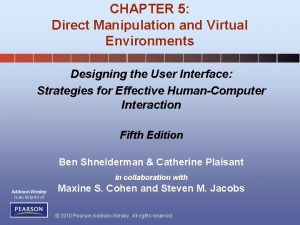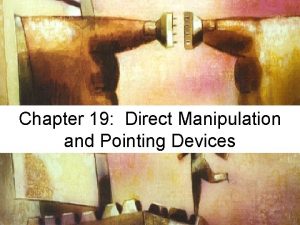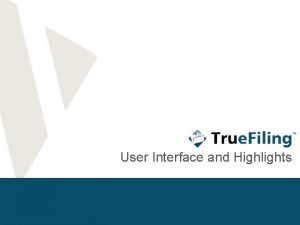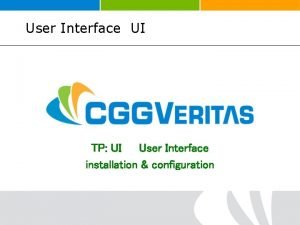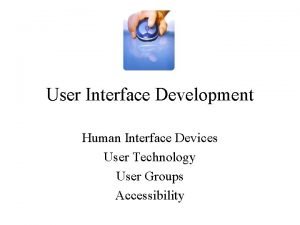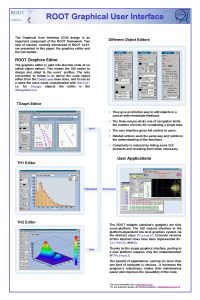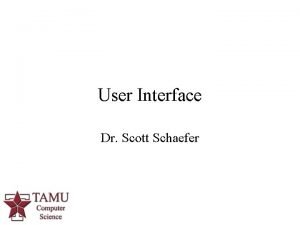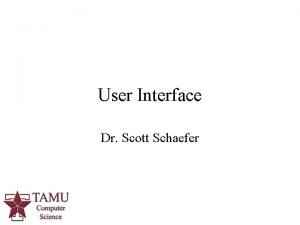CHAPTER 3 Direct Manipulation Designing the User Interface























- Slides: 23

CHAPTER 3: Direct Manipulation Designing the User Interface: Strategies for Effective Human-Computer Interaction Fifth Edition Ben Shneiderman & Catherine Plaisant Addison Wesley is an imprint of in collaboration with Maxine S. Cohen and Steven M. Jacobs © 2010 Pearson Addison-Wesley. All rights reserved.

Introduction • Good interfaces => Satisfied user – – Competence in performing tasks Ease in learning the system Confidence in retaining mastery over time Enjoyment in using the system • Direct-manipulation interfaces => Good interfaces – Visible objects – Rapid, reversible, incremental actions – Pointing actions 1 -2 © 2010 Pearson Addison-Wesley. All rights reserved. 6 -2

Introduction • Newer concepts extend direct manipulation Include – – – Collaborative interfaces Touchable interfaces Virtual reality Augmented reality Teleoperation 1 -3 © 2010 Pearson Addison-Wesley. All rights reserved. 6 -3

Overview • • • Reviews important historical examples Explores principles of direct manipulation Provides psychological jutifications Raises concerns Newer concerns – 3 D – Teleoperation – Virtual and augmented reality 1 -4 © 2010 Pearson Addison-Wesley. All rights reserved. 6 -4

Examples of Direct-Manipulation Systems • • • Applications Office Automation Spatial Data Management System Video Games Computer Aided Design 1 -5 © 2010 Pearson Addison-Wesley. All rights reserved. 6 -5

Direct-Manipulation Systems : spatial data management • Xeroc PARC’s Information Visualizer • Arc. GIS • Google Maps • Google Earth 1 -6 © 2010 Pearson Addison-Wesley. All rights reserved. 6 -6

Direct-Manipulation Systems : Video Games • Most exciting, well-engineered, and commercially successful example of direct-manipulation systems Video Games • Pong first video game • Nintendo Wii, Sony Play. Station, and Microsoft Xbox continue to evolve – – 3 D, stereo sound, multiplayer, wireless controllers Commands are physical actions whose results are immediately shown on screen No syntax to remember no syntax error messages Games continuously display a score feedback encourages mastery • Game Examples: – – – Sim. City – good example of direct manipulation / urban planning Second Life – social virtual world Spore – evolving creatures Myst – puzzle; well received DOOM and Quake controversial World of Warcraft – massive multiplayer game © 2010 Pearson Addison-Wesley. All rights reserved. 1 -7 6 -7

Direct-Manipulation Systems Guitar Hero video game 1 -8 © 2010 Pearson Addison-Wesley. All rights reserved. 6 -8

Direct-Manipulation Systems : Computer-aided design • Computer-aided design (CAD) use direct manipulation – Engineering, Architecture, Automobile Parts Designers – Examples: Auto. CAD, Autodesk Inventor • Computer-aided manufacturing (CAM) – Honeywells’ Experion Process Knowledge System – plant operations/process control • • Manipulate the object of interest Generate alternatives easily Explain the impact Problem solving by analogy to the real-world 1 -9 © 2010 Pearson Addison-Wesley. All rights reserved. 6 -9

Direct-Manipulation Systems 1 -10 © 2010 Pearson Addison-Wesley. All rights reserved. 6 -10

Principles of Direct Manipulation 1. Continuous representations of objects and actions of interest with meaningful visual metaphors. – Novices learn, masters quick, intermittent users retain, can see actions further goals 2. Physical actions or presses of labeled buttons, instead of complex syntax. – Easy to learn, fewer errors, users feel in control 3. Rapid, incremental, reversible actions whose effects on the objects are visible immediately. 1 -11 © 2010 Pearson Addison-Wesley. All rights reserved. 6 -11

3 D Interfaces • “Pure” 3 D interfaces have strong utility in some context, – e. g. , medical, product design, scientific visualization • Other situations, more constrained 2 D interfaces may be preferable to simplify interactions – e. g. 3 D bar charts, air-traffic control, digital libraries • “Enhanced” interfaces, better than reality, can help reduce the limitations of the real-world, – e. g. , providing simultaneous views, flying, x-ray vision • Games are good example – Avatars in multiplayer 3 -D worlds – First person games © 2010 Pearson Addison-Wesley. All rights reserved. 1 -12 6 -12

3 D Interfaces 1 -13 © 2010 Pearson Addison-Wesley. All rights reserved. 6 -13

3 D Interfaces Features for effective 3 D: – – – – – Use occlusion, shadows, perspective, etc. carefully. Minimize number of navigation steps for users to accomplish their tasks. Keep text readable. Avoid unnecessary visual clutter, distraction, contrast shifts, and reflections. Simplify user movement. Prevent errors. Simplify object movement Organize groups of items in aligned structures to allow rapid visual search. Enable users to construct visual groups to support spatial recall. 1 -14 © 2010 Pearson Addison-Wesley. All rights reserved. 6 -14

3 D Interfaces Guidelines for inclusion of enhanced 3 D features: – Provide overviews so users can see the big picture – Allow teleoperation (more later) – Offer X-ray vision so users can see into or beyond objects. – Provide history keeping (for undo, redo) – Permit rich user actions on objects – Enable remote collaboration – Give users control over explanatory text and let users select for details on demand. – Offer tools to select, mark, and measure. 1 -15 © 2010 Pearson Addison-Wesley. All rights reserved. 6 -15

3 D Interfaces Guidelines for inclusion of enhanced 3 D features : – Implement dynamic queries to rapidly filter out unneeded items. – Support semantic zooming and movement – Enable landmarks to show themselves even at a distance – Allow multiple coordinated views – Develop novel 3 D icons to represent concepts that are more recognizable and memorable. 1 -16 © 2010 Pearson Addison-Wesley. All rights reserved. 6 -16

Teleoperation • Derives from two concepts: – direct manipulation in personal computers – process control in complex environments • Physical operation is remote controlled – Surgery, power plants, chemical plants, military ops, computersupported collaborative work • Complicating factors in the architecture of remote environments: – Time delays • transmission delays • operation delays – Incomplete feedback – Feedback from multiple sources – Unanticipated interferences 1 -17 © 2010 Pearson Addison-Wesley. All rights reserved. 6 -17

Teleoperation - Applications • Telemedicine: o Medical care delivered over communication links o Allows physicians to examine patients remotely and surgeons to carry out operations across continents. • Telepathology o A pathologist examines tissue samples or body fluids under a remotely located microscope. o The transmitting workstation has a high resolution camera mounted on a motorized light microscope. o The pathologist at the receiving workstation can manipulate the microscope using a mouse or keyboard and can see a high resolution image of magnified sample. 1 -18 © 2010 Pearson Addison-Wesley. All rights reserved. 6 -18

Telepathology 1 -19 © 2010 Pearson Addison-Wesley. All rights reserved. 6 -19

Teleoperation - Applications • Virtual Colonoscopy: o Allows the patient to undergo a CT scan as opposed to a more invasive procedure; o The physicians can then interactively navigate through a 3 D model. • Robotic surgery o An alternative to conventional surgery that enables a smaller incision and more accurate and precise surgical movements. 1 -20 © 2010 Pearson Addison-Wesley. All rights reserved. 6 -20

Robotic surgery 1 -21 © 2010 Pearson Addison-Wesley. All rights reserved. 6 -21

Teleoperation – military application • Commonly used by the military and by civilian space projects • Operations using unmanned aircraft • Teleoperated missile firing aircraft • Agile and flexible mobile robot • Harsh environments such as undersea, space exploration 1 -22 © 2010 Pearson Addison-Wesley. All rights reserved. 6 -22

Direct Manipulation – Benefits and Drawbacks • Benefits: o Control/display compatibility o Less syntax reduces error rates o Errors are more preventable o Faster Learning and higher retention o Encourages exploration • Drawbacks: o Increased system resources o Some action may be cumbersome o Macro techniques are often weak o History and other tracing may be difficult o Visually impaired users may have more difficulty 1 -23 © 2010 Pearson Addison-Wesley. All rights reserved. 6 -23
 Ben shneiderman designing the user interface
Ben shneiderman designing the user interface Direct manipulation interface
Direct manipulation interface Interface in interface java
Interface in interface java Office interface vs industrial interface
Office interface vs industrial interface Industrial interfaces
Industrial interfaces Interface------------ an interface *
Interface------------ an interface * Direct manipulation hci
Direct manipulation hci Pengertian direct manipulation
Pengertian direct manipulation Pengertian direct manipulation
Pengertian direct manipulation Yang merupakan ragam dialog dalam sistem menu adalah
Yang merupakan ragam dialog dalam sistem menu adalah Yahoo user interface library (yui)
Yahoo user interface library (yui) Xml user interface language
Xml user interface language Graphical user interface testing
Graphical user interface testing User interface subsystem
User interface subsystem Enterprise architect interface diagram
Enterprise architect interface diagram Basic principles of input design
Basic principles of input design User interface design cycle
User interface design cycle User interface importance
User interface importance User interface design steps in software engineering
User interface design steps in software engineering User interface analysis and design
User interface analysis and design Touch screen technology seminar
Touch screen technology seminar Characteristics of web interface
Characteristics of web interface Graphical user interface design principles
Graphical user interface design principles Tangible user interface examples
Tangible user interface examples
